News
Scubaverse Underwater Photographer Interview: Joe Daniels
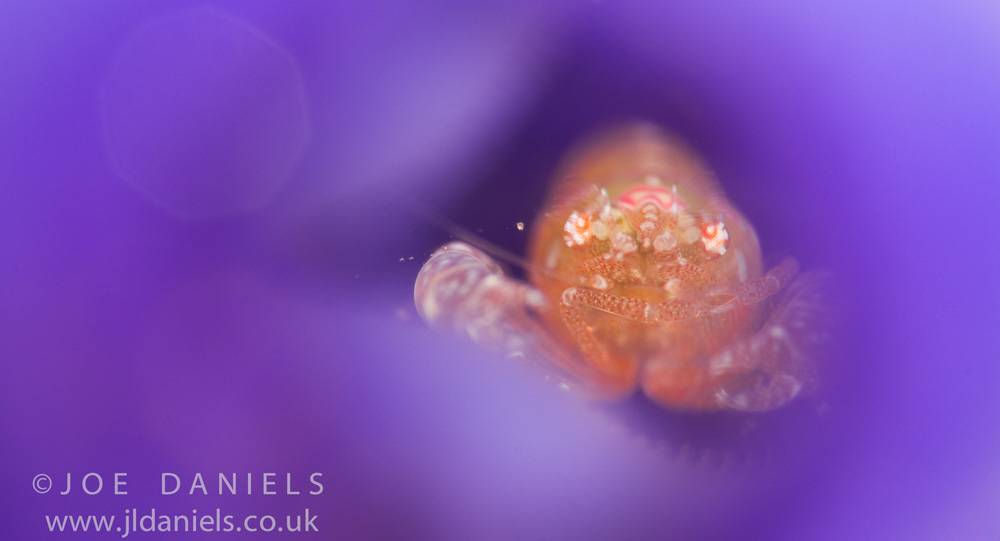
In an ongoing series, Scubaverse.com’s Underwater Photography Editors Nick and Caroline Robertson-Brown talk to underwater photographers from around the world that they admire.
This interview is with award-winning photographer Joe Daniels.
 Thank you for asking me to participate in this interview! Originally I am from Suffolk, England and I am now based in South West France. For the past ten years I have been fortunate enough to work on various different marine conservation projects and diving operations around the world. Through diving and spending a lot of time underwater I developed a passion for underwater photography. Now I can’t bear to be in the water without a camera, whether it’s a murky pond or bustling coral reef.
Thank you for asking me to participate in this interview! Originally I am from Suffolk, England and I am now based in South West France. For the past ten years I have been fortunate enough to work on various different marine conservation projects and diving operations around the world. Through diving and spending a lot of time underwater I developed a passion for underwater photography. Now I can’t bear to be in the water without a camera, whether it’s a murky pond or bustling coral reef.
My highest achieving image so far would probably be my Tunicate Shrimp which earnt gold in the Traditional Macro category in the Our World Underwater competition. I have also placed in Outdoor Photographer of the year twice, HIPA Life in Colour and World Oceans Day photo competition. A Whale Shark image of mine was used in BEIJING by Humane Society International and the Jane Goodall Institute. The exhibit, entitled “The Price Behind the Taste—Protect Sharks, Don’t Eat Shark Fins,” was to enlist public support for the protection of sharks. I was very proud to be included in this campaign.
So far in my career I have spent the majority of my time across two locations – The muck diving mecca of Ambon in eastern Indonesia and the idyllic Indian Ocean archipelago of Seychelles. The two locations could not be more different photographically which I think helps diversify my portfolio. I have also been to Raja Ampat twice in the past three years, the marine life there is astounding and is very hard to beat.
N/C: How did your underwater photography start?
JD: As soon as I left college I went and volunteered on a Marine Conservation Project in Seychelles. There I was involved in reef monitoring where we did 2 survey dives per day from Monday to Friday. This wasn’t enough in water time for me so I spent all my spare time and weekends snorkelling. One weekend I borrowed a small clear dry bag for my pentax point and shoot camera. After going out snorkelling with the camera and taking some terrible pictures of Turtles and various corals I was hooked.
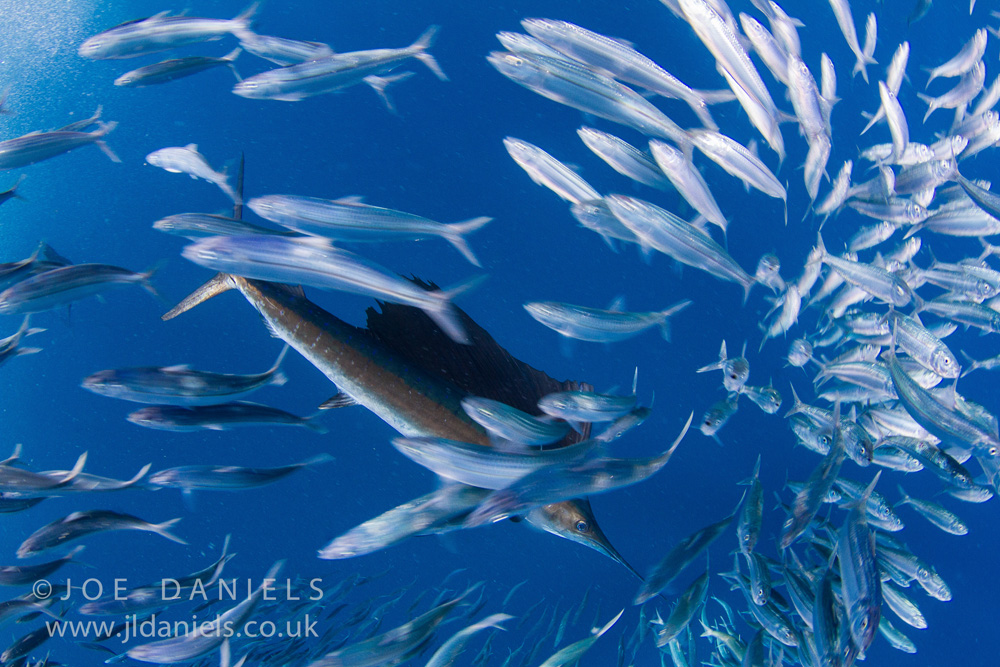
N/C: What is your favourite u/w camera equipment (past & present) & why?
JD: I love to shoot cfwa images so my Nauticam mini dome and Tokina 10-17mm fisheye is a favourite set up of mine. I have also recently acquired a Trioplan 100mm f2.8 so I am looking forward to shooting and experimenting with that later this year.
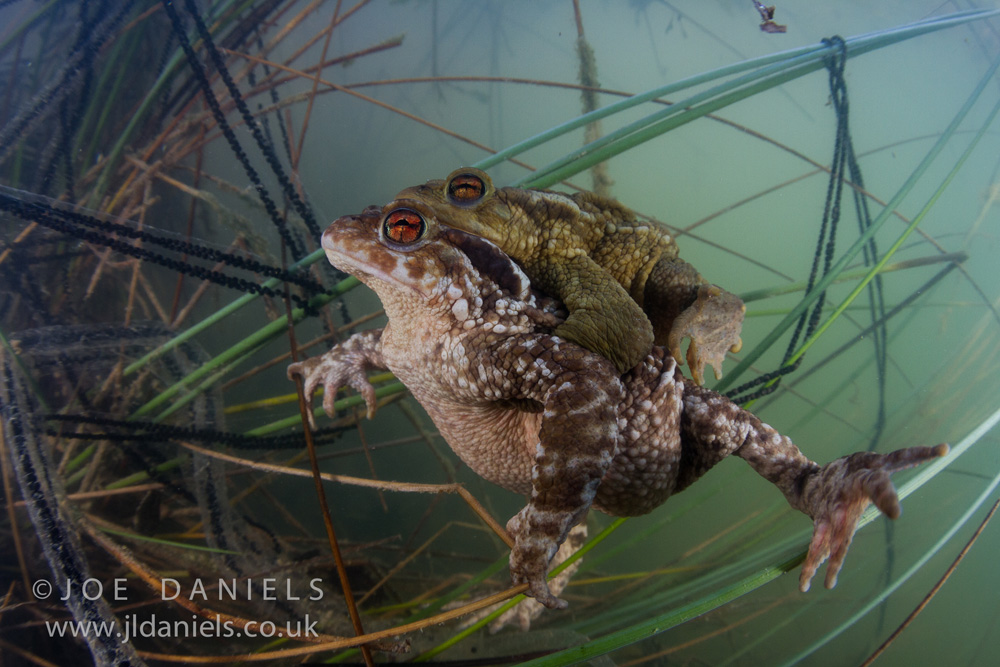
N/C: What would be your advice to anyone new to underwater photography?
JD: Not to get obsessed buying the latest and greatest camera setup. Of course buy the best you can afford, but it’s not everything. Focus on subject selection, composition and light. It also makes a huge difference if you are a comfortable and competent underwater.
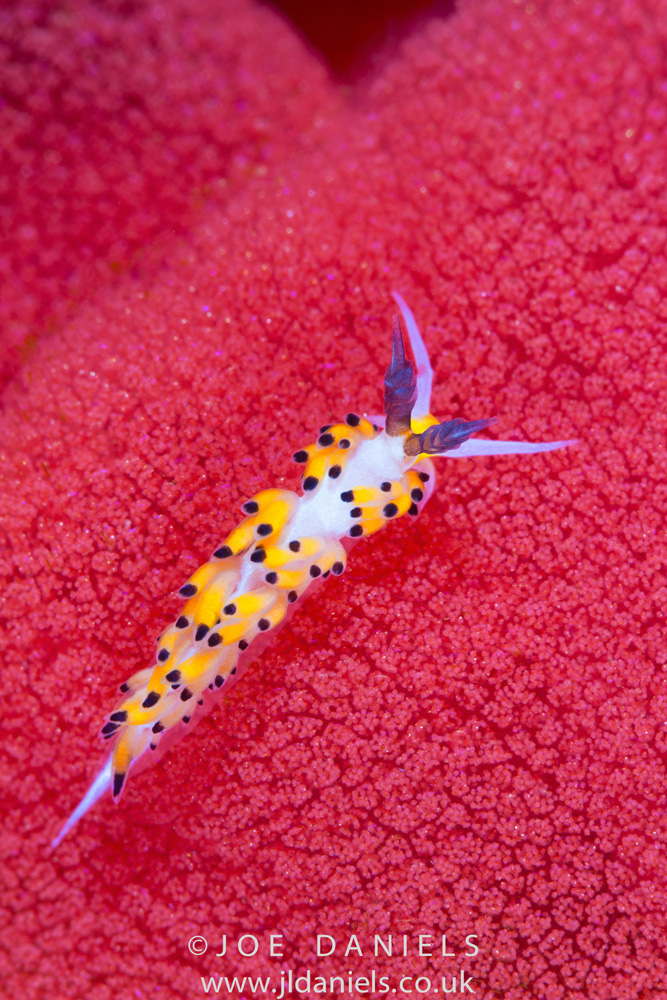
N/C: What, or who, has been your single biggest inspiration for your underwater photography?
JD: When I first started taking pictures underwater I loved to show people what I had seen whilst I was underwater, I still do. Now I like to show people things that they may have never seen before, or animals they know of but shown in a different way. I just want to share my enthusiasm for the underwater world and hopefully get others excited about it too. There are many photographers that inspire my work, notably Thomas Peschak his images continually amaze me. Alex Mustard’s images are a technical masterclass and are always a joy to behold. Eduardo Acevedo Fernandez, Laurent Ballesta and David Doubilet all produce jaw dropping images and all have large influences on my work.
N/C: Where is your favourite dive location, and is it for the photography?
JD: This is a tough question. I have favourite locations for differing reasons, and there are many places I have not had the chance to get to yet. For macro it has to be Ambon. The abundance of subjects there is endless. The thing I like most about diving in Ambon is that it’s not just macro. There are incredible jetty’s, caves, reefs and even a wreck. So photographically its fantastic. For wide angle I would have to say Misool in Raja Ampat. The health and diversity of the reef systems there are world class. It is also a massive conservation success story being protect by a patrolled no take zone which is twice the size of Singapore. The Yucatan Peninsular, Mexico also has some spectacular photographic opportunities with its Cenotes, Sailfish and Sharks. Finally Seychelles will always be a special place for me where I’ve had many special encounters.

N/C: What are you views on marine life manipulation, moving subjects?
JD: With regards to moving subjects especially in macro photography I am against it. Picking animals up and moving them just for a photo is not acceptable. I would be a hypocrite if I was to say that I didn’t have images where the animal had been coaxed a little to get a better image. I think there would be very few photographers that have never coaxed a critter to a different position for a better image, if they are honest. I think with the rise of social media it has got out of hand as macro photography is very competitive now, photographers are so focused on getting as many likes as possible their ethics go out of the window a bit. On the other hand I have been on dives with photographers that are very anti manipulation and will not tolerate it at all, but will then take hundreds of pictures of one subject then swim straight over the subject wiping it out in one fin kick and not even noticing.
Every time we enter the water we make an impact, it’s what we do to reduce this impact. Don’t forget those basic diving skills you learnt in your open water course and be specially aware. Talk to your dive guide and ask them just to show you, instead of positioning. They are just trying to please you when they move things as it usually increases their tip. The dive operations can also have a code of conduct for photographers to abide by whilst diving to reduce their impact. Marine life manipulation is not isolated to macro photography. Tiger Beach is a good example, the sharks are lured in front of photographers cameras with bait for sunset splits or a perfect pass. I’m not saying I’m against shark diving practices, quite the opposite. If we can make them financially profitable sharks are much less likely to be killed for their fins. I suppose what I am trying to say it that it’s not a Black & White issue. We have to be responsible in our actions and have some foresight to ensure these amazing creatures continue to thrive and photographers can continue to photograph them. So the less we poke and prod them the more likely they are to stick around.
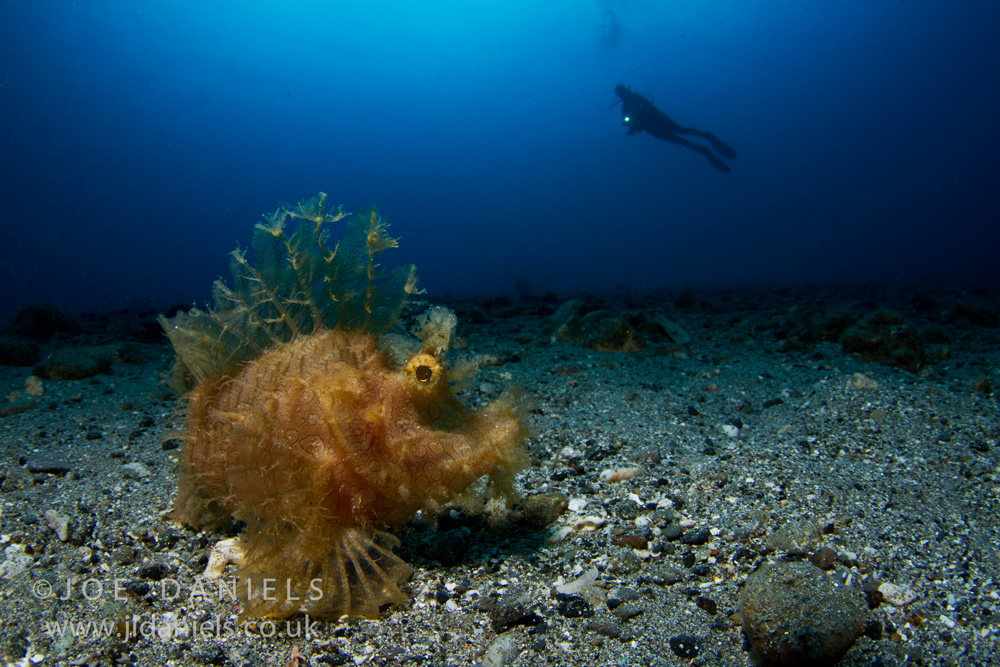
N/C: What do you look for when you are making your images?
JD: It depends on what I’m shooting and in what conditions I am shooting in. For macro I am looking for a willing subject in a good position, generally raised up off the substrate if I want a black background. What I really like to shoot is a subject with an attractive background. If there is current or surge I will try and stay away from super macro and shallow DOF. For wide angle I am always looking for the best light, I can’t resist a Indonesian jetty with shafts of light streaming through the wooden slats. When the light is good I’m looking for a subject to fill the foreground and complete the image. I also love to incorporate the surface into my images, whether it’s a split image or incorporating Snell’s window. These are usually the images that stand out to people that are not divers or spend much time underwater. I think it gives the viewer something to relate to. No matter what technique I’m using I always shoot to the conditions. Whether that means streamlining my gear to catch up with speeding Sailfish or simplifying my images when there is current. When the conditions change so does my plan for making images, this is not necessarily a bad thing. Varying conditions may diversify your portfolio. One of my favourite images is a Turtle silhouette, instead of the classic sunbeams behind it (which I was initially after) it poured with rain so it has rain drops hitting the surface filling the rest of the frame. Shooting in those conditions created an image that stands out from the rest.
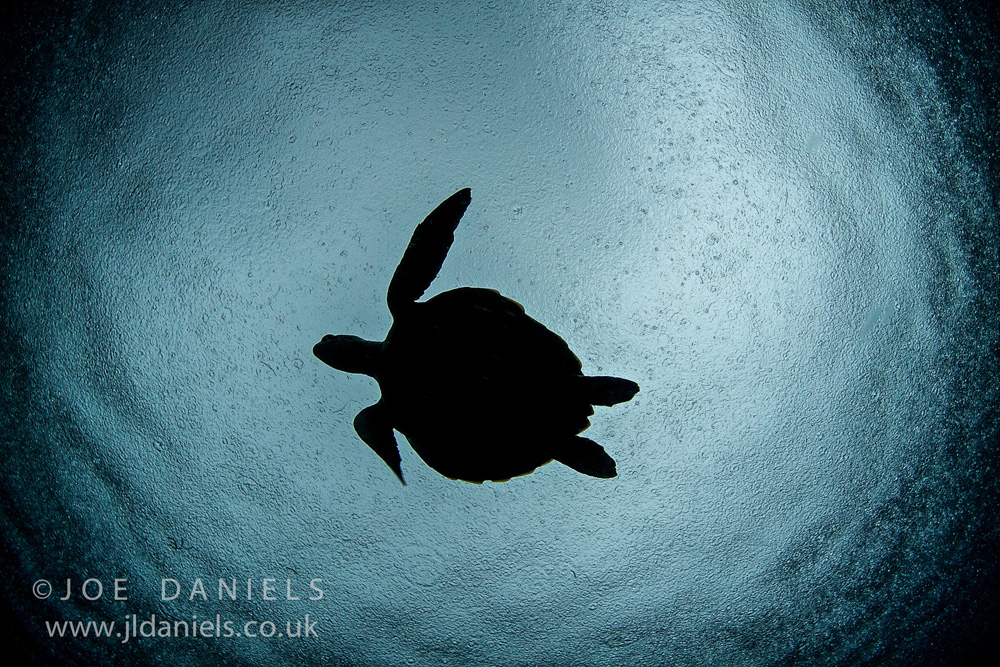
N/C: What motivates you to take u/w photos?
JD: Simply because I love it! I love the whole process of making pictures from deciding what set up to use, setting everything up and being underwater searching for a subject. I love that I can use my images to promote marine conservation issues and to just show to people how amazing the underwater world is. I’m constantly learning and driven to take better pictures.
N/C: If you could photograph any one thing/place what or where would that be?
JD: Although I have been to Raja Ampat twice I would love to go back and visit the Blue Water Mangroves of Misool. A shallow coral reef with over hanging Mangroves and shafts of light streaming through onto Barrel Sponges and Soft corals sounds incredible, everything I like to shoot all rolled into one dive site.
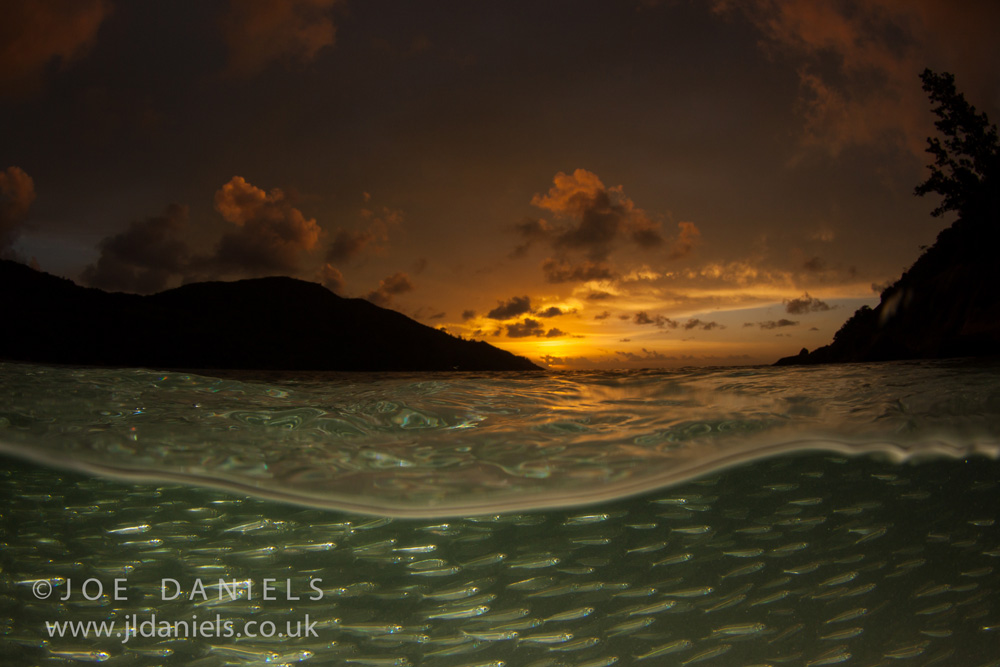
Follow the work of Joe Daniels at www.jldaniels.co.uk or on his Facebook page and instagram @j_l_daniels
Blogs
The Ocean Cleanup Breaks 10,000,000 KG Barrier

The Ocean Cleanup, the global non-profit project, has removed a verified all-time total of ten million kilograms (22 million lbs.) of trash from oceans and rivers around the world – approximately the same weight as the Eiffel Tower.
To complete its mission of ridding the oceans of plastic, The Ocean Cleanup uses a dual strategy: cleaning up the Great Pacific Garbage Patch (GPGP) to remove the plastic already afloat in the oceans, while stopping the flow of plastic from the world’s most polluting rivers.
Through cleaning operations in the GPGP and in rivers in eight countries, the cumulative total of trash removed has now surpassed ten million kilograms. This milestone demonstrates the acceleration of The Ocean Cleanup’s impact, while underlining the astonishing scale of the plastic pollution problem and the need for continued support and action.
While encouraging for the mission, this milestone is only a staging point: millions more tons of plastic still pollute our oceans and The Ocean Cleanup intends to continue learning, improving and innovating to solve this global catastrophe.
This announcement comes as governments from around the world meet to continue negotiations to develop a new legally binding instrument to end plastic pollution at INC4 in Ottawa, Canada. Representatives of The Ocean Cleanup will be in attendance and the organization will be urging decision-makers to collaborate towards a comprehensive and ambitious global treaty which addresses plastic at all stages of its life cycle and in all marine environments worldwide, including in areas beyond national jurisdiction.
It is encouraging to see that the need for remediation is reflected in the various options for potential treaty provisions. It is essential that the final treaty contains clear targets for the remediation of legacy plastic pollution, and reduction of riverine plastic emissions.
Tackling plastic pollution requires innovative and impactful solutions. The treaty should therefore incentivize the innovation ecosystem by fostering innovations that make maximal use of data, technology and scientific knowledge – such as those designed and deployed by The Ocean Cleanup.
‘After many tough years of trial and error, it’s amazing to see our work is starting to pay off – and I am proud of the team who has brought us to this point.’ said Boyan Slat, Founder and CEO of The Ocean Cleanup. ‘While we still have a long way to go, our recent successes fill us with renewed confidence that the oceans can be cleaned.’
The Ocean Cleanup was founded in 2013 and captured its first plastic in 2019, with the first confirmed catch in the GPGP coming soon after the deployment of Interceptor 001 in Jakarta, Indonesia. After surpassing one million kilograms of trash removed in early 2022, the non-profit project has since progressed to the third iteration of its GPGP cleaning solution, known as System 03, and a network of Interceptors currently covering rivers in eight countries, with more deployments set for 2024.
About The Ocean Cleanup
The Ocean Cleanup is an international non-profit organization that develops and scales technologies to rid the world’s oceans of plastic. They aim to achieve this goal through a dual strategy: stemming the inflow via rivers and cleaning up the legacy plastic that has already accumulated in the ocean. For the latter, The Ocean Cleanup develops large-scale systems to efficiently concentrate the plastic for periodic removal. This plastic is tracked and traced through DNV’s chain of custody model to certify claims of origin when recycling it into new products. To curb the tide via rivers, The Ocean Cleanup has developed Interceptor™ solutions to halt and extract riverine plastic before it reaches the ocean. Founded in 2013 by Boyan Slat, The Ocean Cleanup now employs a broadly multi-disciplined team of approximately 140. The foundation is headquartered in Rotterdam, the Netherlands.
For more information, visit: theoceancleanup.com and follow @theoceancleanup on social media.
Marine Life & Conservation
Steve Backshall to headline Shark Trust’s flagship event: For the Love of Sharks

Join a host of amazing, shark loving, speakers including Steve Backshall and the Shark Trust team for an evening celebrating shark conservation at the Royal Geographical Society in London this November.
Date: 29th November 2024
Time: 6-10pm
Location: Royal Geographical Society, London
Tickets: https://www.sharktrust.org/Event/flos24
The event will be a celebration of all things shark. Those lucky enough to get hold of tickets will hear from engaging guest speakers with a passion for sharks.
The line-up includes (*subject to change if unforeseen circumstances arise)
Steve Backshall: One of television’s busiest presenters, BAFTA award-winning wildlife expert Steve has been passionate about the wild world ever since he was young.
Steve’s impressive TV career has taken him all around the world, investigating a wide array of species and environments. Steve has filmed over 100 hours of children’s wildlife programmes with the BAFTA award winning Deadly 60 franchise and recently, with Sky Nature, for his new series ‘Whale with Steve Backshall’. He has been a patron for the Shark Trust for 10 years.
Simon Rogerson: is a photojournalist specialising in natural history, diving and the sea.
He is editor of SCUBA magazine, the official journal of the British Sub-Aqua Club. Simon started his career as a crime reporter but gravitated towards his ‘less depressing’ interest in underwater exploration, joining the staff of DIVE magazine in 1999. In 2005 he was named ‘Editor of the Year’ in the PPA’s Independent Publishing Awards. Simon also works as a freelance writer, contributing frequently to the Sunday Times and Telegraph, in addition to BBC Wildlife, Esquire, and a host of international diving magazines. He is the author of a book, Dive Red Sea, published by Ultimate Sports. Now based in Berkshire, Simon has been a Patron of the Shark Trust for 20 years.
More speakers to be announced soon. Head to the Shark Trust website to learn more.
The evening will also allow guests the final chance to see the Oceanic 31, shark art exhibition. Some of the artwork will be auctioned/raffled at the event, while the rest will be auctioned online to raise money for the Shark Trust Oceanic Programme.
For the Love of Sharks is an evening with something for everyone who is interested and fascinated by sharks. Join the Shark Trust, their Patrons, Trustees and Staff, along with a host of supporters for this celebration of shark conservation.
For more information or to buy a ticket: https://www.sharktrust.org/Event/flos24
-

 News3 months ago
News3 months agoCapturing Critters in Lembeh Underwater Photography Workshop 2024: Event Roundup
-

 Marine Life & Conservation Blogs3 months ago
Marine Life & Conservation Blogs3 months agoCreature Feature: Swell Sharks
-

 Blogs2 months ago
Blogs2 months agoMurex Resorts: Passport to Paradise!
-

 Blogs2 months ago
Blogs2 months agoDiver Discovering Whale Skeletons Beneath Ice Judged World’s Best Underwater Photograph
-

 Gear Reviews3 weeks ago
Gear Reviews3 weeks agoGEAR REVIEW – Revolutionising Diving Comfort: The Sharkskin T2 Chillproof Suit
-

 Gear Reviews3 months ago
Gear Reviews3 months agoGear Review: Oceanic+ Dive Housing for iPhone
-

 Marine Life & Conservation2 months ago
Marine Life & Conservation2 months agoSave the Manatee Club launches brand new webcams at Silver Springs State Park, Florida
-

 News2 months ago
News2 months agoPADI Teams Up with Wellness Brand Neuro to Drive Ocean Change and Create a Blue State of Mind

















